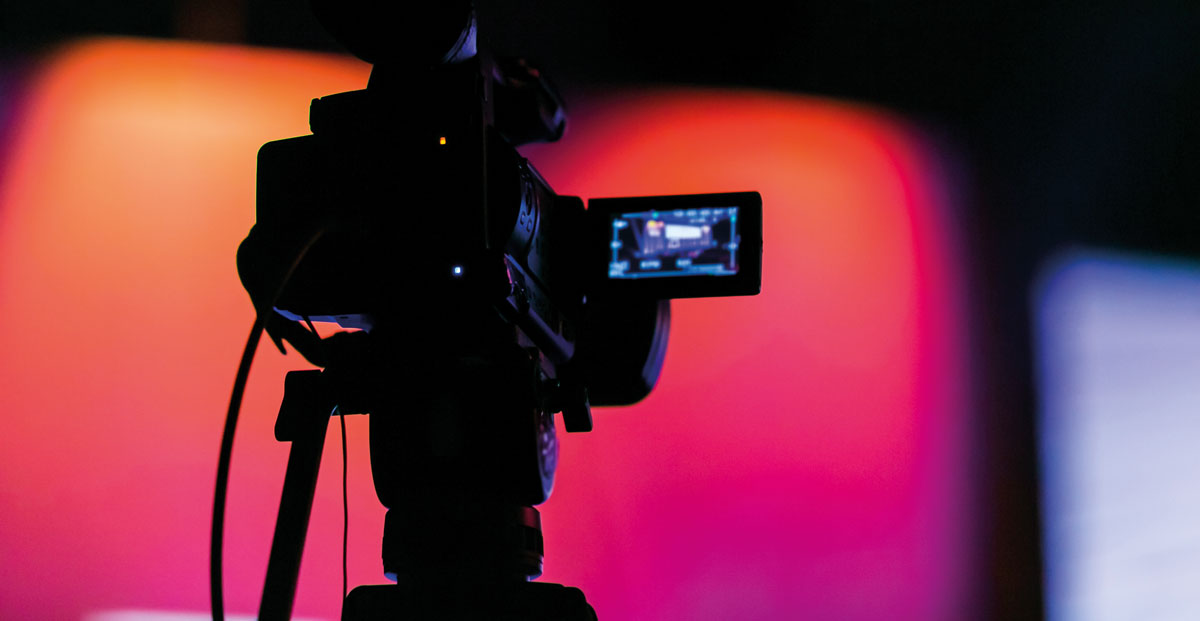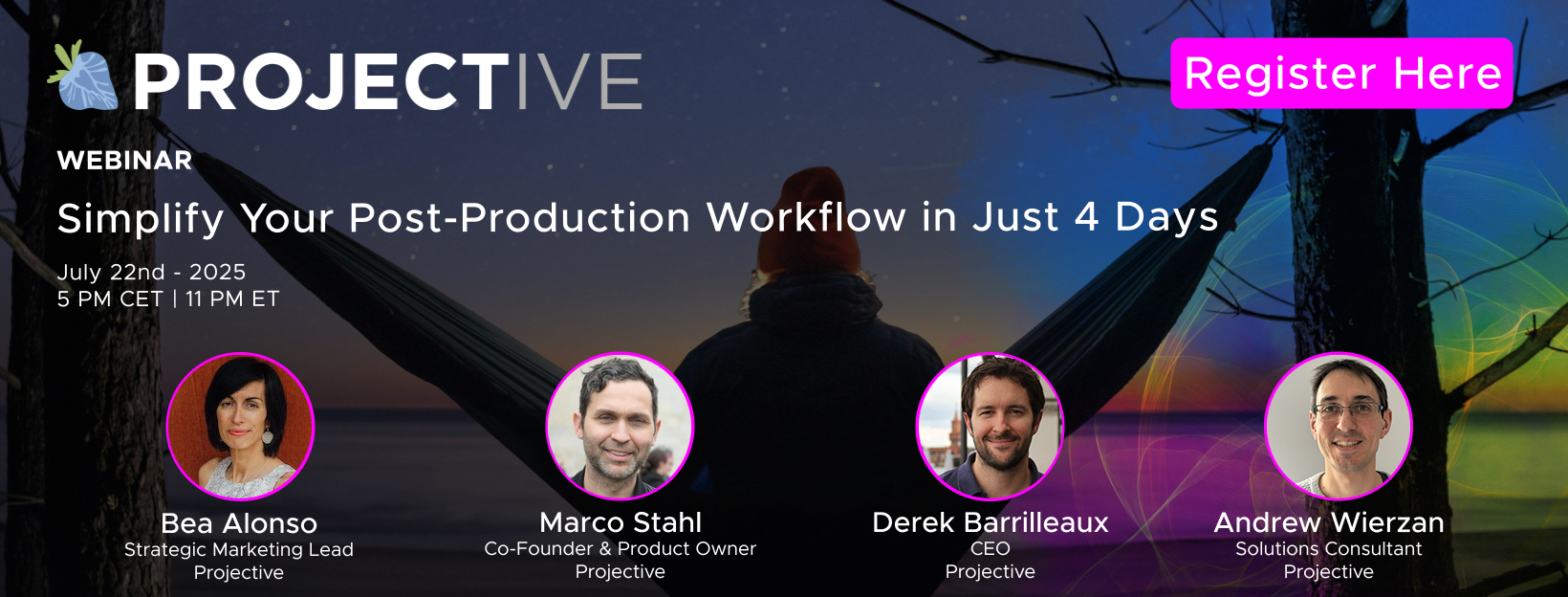Leveraging Livestreaming

Posted on Sep 5, 2023 by FEED Staff
Live streaming is an integral ingredient to any live production recipe. In this round table, we sit down with experts in the field to understand the trending tech facilitating this revolution
Sponsored editorial
Moderated by FEED editor, Verity Butler
The Experts:
- Adrian Roe, CEO of Norsk, director of Id3as
- Fabio Gallo, general manager for Europe and Asia, Viewlift
- Jean Macher, senior director of global SaaS solutions, Harmonic
- Scott Kidder, senior engineering manager, Mux
VERITY BUTLER: Could you share some of the key lessons learnt from live streaming over the years?
ADRIAN ROE: The main learnings I would take from my time with Id3as is to treat scale and reliability as first-class systems – to plan from the very beginning with those in mind.
You need to be able to automate the ‘what-if’ scenarios when things don’t go quite right – as they might do in lab conditions where you wouldn’t want a human to have to get involved and manually fix it – because that simply doesn’t scale.
JEAN MACHER: I concur with that absolutely. One lesson I learnt from large-scale sport events we’ve done like the Super Bowl, Olympics and World Cup is that live is different from other streaming workflows: it’s harder. If you think of SVOD and FAST, they have lots to do with preparing files that can be QC’d, then streamed to individuals.
In live sports, you’re getting a live feed from the venue. That happens in real time and you have to deliver to many viewers. It’s not like VOD streaming where it goes to one person. If anything’s wrong along the chain, the blast radius in terms of impacted viewers is huge.
VERITY BUTLER: How does live streaming presently impact the broadcast-tech landscape?
FABIO GALLO: Live streaming has brought a wave of positive changes to the broadcast landscape, making it more accessible and enjoyable for users.
There are a few platforms that make it incredibly easy for people of all backgrounds to become a broadcaster. All you need is a smartphone and internet connection to share your passion or talents and you can start your livestreaming current.
Even the smaller sports entities are starting to distribute thousands of live games – increasing their audiences, generating new user data and tracking user behaviour. In some cases, you’re also starting to increase revenue potential.
One of the most exciting aspects of live streaming is the ability to connect with your audience in real time. As a content creator, you can interact with your audience in a live chat, responding to comments, generate tweets – and so on. This creates a wonderful sense of community where people start to interact with each other.
The other thing I would add is accessible entertainment. Normally, people are hungry for content, but streaming has made entertainment more accessible than ever before. You can access from any platform to watch sports events or tournaments – or attend huge conferences.
SCOTT KIDDER: Similarly, a big thing for me is the opportunity for engagement from the audience. And simply having lower latency.
The feedback that loops back to the content or infrastructure providers involved in live streaming has moved forward in leaps and bounds compared to 10-15 years ago. That’s opened up a ton of different opportunities, but also a lot of challenges that are exciting and definitely ready to be solved both by myself and other companies in the industry. That’s something I’m excited about.

VERITY BUTLER: Having a good-quality, faultless live stream has moved from being a hope to a minimum expectation. How have you as vendors coped with that challenge?
JEAN MACHER: When cloud streaming, you need to be protected from losing redundancy. If you lose a region, you need another platform in that region to seamlessly pick up the slack. That means there are a lot of challenges when moving into the cloud and then operating with broadcast quality. But, you can absolutely do it. You can build enough redundancy into your cloud platform to meet the requirements of a broadcast-quality live stream.
It also has to do with making the right decision if something goes bad. That idea of having DevOps – people with plenty of automated tools to monitor what’s happening, but who also know what to do and have procedures in place.
ADRIAN ROE: There’s an interesting element of circularity we are seeing. When Id3as was founded 13 years ago, all of our focus was on the cloud.
What we’re seeing more and more are customers saying they’ve had a journey into the cloud that maybe started five to six years ago, which is fantastic for availability and scaling out. But we’ve then seen interest in taking a base use case and bringing that back into their own control.
SCOTT KIDDER: Live streaming can be notoriously expensive and complex to operate. But there’s also a greater desire for people to produce and generate livestreaming content, especially in the UTC space. Being able to handle that increased number of live streams, economically, is a real challenge. It doesn’t necessarily directly relate to the broadcast space, but UTC content is now closing in on broadcast in terms of production and stream quality.
VERITY BUTLER: What are some livestreaming solutions or scenarios that stand out to you as the most cutting edge?
FABIO GALLO: We launched LIV Golf+ a couple of months ago, which was the number-one sports app in the world for 72 hours. We had a couple of million app downloads in the first few days – which exceeded our expectations. The content was free, which is always a big help. The streaming service was good, available and scalable.
Generally, I’m excited to see how artificial intelligence will continue to be applied to live streaming – used for automated video production, for personalisation or with chatbots to interact with viewers.
SCOTT KIDDER: One of the things I’m most excited about in terms of livestreaming solutions is the opportunity to create feedback loops to the content creator around the quality of the feed that they’re pushing. Also, viewer engagement.
Mux Video is sometimes used as a live-ingest video solution in another company’s product. That makes it important to be able to provide a feedback signal to the content producer about how their live-ingest stream is working. With Mux Video, we can push metrics about how the live ingest is performing, and our customer can then surface that information back to the video producer. You can also get viewership stats.
All this is to say that data about how the live stream is performing ingest-wise is important, but it also helps understand viewer engagement. It’s about getting more data created around the live stream itself.
JEAN MACHER: Mine may not sound especially cutting edge, but it’s something I was happy to see. That was the scale achieved at the last World Cup while retaining low latency. Things like UHD with HDR and low-latency streaming. We feel great satisfaction in the fact that this isn’t a proof of concept any more – especially with arguably the biggest international sporting event like the World Cup.
To me, the cutting-edge aspect is not so much the capability of the solution, but the scale at which you have to run it. That’s an important trend in my eyes because the hope is that it’s going to trickle down to more sports in general – after those big tent-pole events.
ADRIAN ROE: There are really interesting projects going on. Some national broadcasters are saying that every high school game should be available on TV.
The idea being that rather than streaming five soccer matches on a Saturday afternoon, they might be streaming 2000 soccer matches on an app. Then they start to think: ‘Well, how am I going to do that?’ You have got to begin with an AI camera operator because you can’t send the camera crew to 2000 games on a Saturday afternoon, at least not economically. Then how do you make that a compelling experience?
It’s technically extremely interesting – and socially extremely interesting. Because you are tapping into very committed but also very small audiences.

VERITY BUTLER: The broadcast and tech worlds are shifting their gazes to XR solutions and the metaverse. What do you think the future holds for live streaming considering this turn of attention?
SCOTT KIDDER: I think there are a lot of opportunities around creating a more immersive experience, both for the content producer but also for the people who are consuming that content.
The first thing that comes to mind are hybrid events. I think live streaming in the metaverse or AR can potentially bridge the gap between physical and virtual events. Perhaps we will start to see a way for people who are attending an event in person to interact more seamlessly with those who are attending virtually.
The other thing is there’s an opportunity for more immersive news and storytelling through VR and AR. We’ve got a customer called Citizen that allows people to livestream news that’s happening near them in the moment. It would be amazing to see the ability to have individuals create a more immersive experience for people viewing that information.
FABIO GALLO: We continue working through leveraging AI to deliver personalised content – and we’re working on social integration. With live streaming specifically, it needs to become all the more deeply integrated into social media platforms and the metaverse.
Finally, monetisation opportunities. Because live streaming is evolving into XR, other new monetisation opportunities will emerge to help creators generate more revenue for sponsorships, brand collaborations and in-platform transactions. Live streams also may introduce currencies or tokens to facilitate those transactions.
ADRIAN ROE: I’m a bit of a sceptic to be brutally honest. The business-streaming world experimented quite hard with augmented-reality and virtual-reality meeting environments over the last few years and, to be frank, it did not go particularly well.
I just don’t think the technology is quite there. Will it become the norm for everybody to sit and wear a headset that weighs as much as they currently do? I don’t think it will personally. The technology has quite a long way to go until it becomes so seamless that it’s acceptable.
JEAN MACHER: At Harmonic, we have been looking at VR for a long time, with that idea that not everyone can have a front-row seat in a live sports game. By using the headset, you get to experience what only a select few get to have in a physical way.
We kept looking at it in this way because one of the things we’ve done for over 20 years is compression, and so of course it’s interesting when there’s a use case that potentially needs a huge amount of video compression.
If you do VR, what you see is not 4K, it’s basically much higher-resolution ‘tiles’ that are potentially – in real time – going to be bringing an entire arena, which is a vast technical challenge. You then have compression challenges, latency challenges and lag.
I agree with Adrian that I don’t think we are there yet. I don’t know when we will be; there is still progress to be made on live streaming itself first.
Originally published in the Autumn 2023 issue of FEED.











